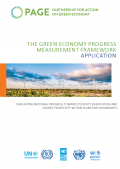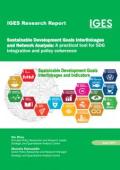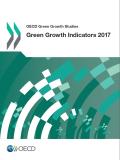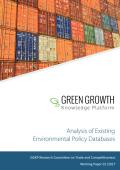

While being broadly framed as 17 separate and diverse elements, Sustainable Development Goals (SDGs) and associated targets inherently interlink with one another making up indivisible parts of sustainability from a systemic perspective. Actions or measures taken for achieving one goal may be mutually reinforcing or contradictory with achieving other goals. SDGs and associated targets through the connections among and between each other form a network of interlinkages. Understanding the interlinkages among the goals and between the targets is crucial for integrated governance and policy coherence for the implementation of SDGs. However, existing knowledge about these connections remains limited.

This OECD report on Green Growth Indicators updates previous editions. It integrates the results of recent developmental work on new indicator methodologies and wider country coverage. This applies notably to the indicators on environmentally adjusted multifactor productivity growth, population exposure to air pollution and the related economic costs, land cover change, and technological innovation. Other indicators have been refined, including demand-based CO2 productivity and environmentally harmful subsidies. Moreover, greater emphasis is placed on the role of policy action. To that end, the report includes enriched discussion in the chapters on environmentally related taxes and subsidies, technology and innovation, and international financial flows. This is supported by an enhanced visual presentation of the indicators.

An enduring concern for developed and developing countries alike is to strike the right balance between ambitious environmental policies and the international competitiveness of both nations and individual firms. Significant advances have been made in measuring the stringency of environmental policies and understanding the relationship between environmental action and economic dynamics. However, the literature evaluating these issues in the context of developing countries remains sparse, mainly due to a lack of data.

This report, the first international assessment of this type, investigates the life-cycle environmental and natural resource implications of large-scale deployment of energy efficiency technologies. The report examines more than 30 demand-side energy efficiency technologies across different technological clusters, including lighting, buildings, information and communication technology, efficient metals processing, high-efficiency cogeneration, and transportation. In addition, the combined effects of low-carbon energy supply and deployment of efficient demand-side technologies under the 2 degree and 6 degree Celsius scenarios are assessed. Research confirms that demand-side technologies reduce greenhouse gas emissions as well as many other environmental impacts. However, the magnitude of those improvements varies widely among technologies and regions. In some cases, demand-side technologies may increase resource consumption and even greenhouse gas emissions. Therefore, it is crucial to understand where, when, and with which technology investment should be placed to maximise benefits.
